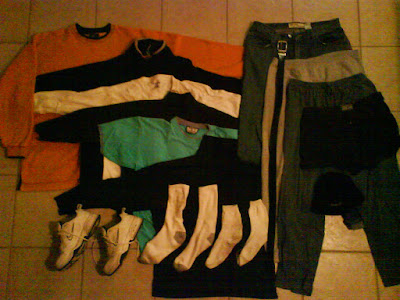 Some services provided by the design department are strictly mundane fare. Things like making employee name badges, bus passes, stationery items, generic certificates, scanning, burning CDs, laminating...you know, nothing to write home about. But occasionally, even a mundane project can find its way into something more colourful, such as a scanning project I was requested to provide by one of our librarians.
Some services provided by the design department are strictly mundane fare. Things like making employee name badges, bus passes, stationery items, generic certificates, scanning, burning CDs, laminating...you know, nothing to write home about. But occasionally, even a mundane project can find its way into something more colourful, such as a scanning project I was requested to provide by one of our librarians.
Our librarian was contacted by someone asking if we could provide a 1200dpi high resolution digital image of two different historical photographs (see http://heritage.acld.lib.fl.us/1001-1050/1041.html and http://heritage.acld.lib.fl.us/1101-1150/1134.html from our Heritage Collection) which would be included in the décor of the new District Court of Appeals building in Tallahassee. The building, was nearing completion and would be using over 350 historical photographs from the First District which runs from Pensacola to Jacksonville and down to Cedar Key on the Gulf Coast. Photos would be enlarged and cleaned up, sepia toned, captioned, and framed with archival glass, etc. Of the two photos we provided, the parade photo would go in a collection titled “People & Places of the First District.” The tractor image would go in a collection entitled “Florida Works”—appropriate because the FDCA covers workers compensation for whole state.
The development as a whole, however, wasn't without its share of political notoriety (as is the case with most public offices it seems). With that in mind, below is the extended discussion beyond my part of providing a couple of digital scans for a government project:
INFORMATION ABOUT THE COURTHOUSE THAT IS USING TWO OF OUR HERITAGE COLLECTION PHOTOGRAPHS:
A brand new $48 million home for the 1st District Court of Appeal in Tallahassee has become a target of criticism from judges in other cash-strapped courts and of political candidates who say it is an example of back room deals and a masked budget process.
Rendering of new $48 million District Court of Appeal building, Tallahassee
“This building is a perfect example of everything that is wrong and broken with Tallahassee,” Democratic Chief Financial Officer candidate Loranne Ausley said Tuesday standing outside the large new, suburban court building, still under construction, but finished enough to know that it dwarfs the old quarters for the court.
The building, scheduled for completion in November, was the subject of a lengthy article Monday in the St. Petersburg Times, which reported that each judge will get a 60-inch LCD flat screen television, a private bathroom with granite counter tops and a kitchen. The building will also have a gym. Meanwhile, judicial circuits around the state have been forced to lay off employees and cut costs at every corner.
Former Florida Supreme Court Justice Fred Lewis told the Times that when a last minute amendment was attached to a transportation bill authorizing the bond issue to pay for the building, he was taken completely by surprise because the negotiations had taken place behind his back. He said he also asked Gov. Charlie Crist to veto the bill.
Crist told reporters Tuesday morning that he didn’t remember a specific veto request on the bond issue, but did answer a question regarding whether he would have done anything differently if he had known about the bond authorization.
“I wish the money had been spent more wisely,” Crist said of the DCA building.
The appropriation was buried in a last-minute and little-noticed amendment to a 142-page transportation bill approved on the last day of the legislative session in 2007, the Times reported. Sen. Victor Crist, R-Tampa, who sponsored the amendment, said then Senate President Ken Pruitt had wanted it, though Pruitt denied that. Crist said the project was also sold to him as a collaboration with Florida State University – which will get the old 1st District Court building in downtown Tallahassee. The old building was rent-free for the courts. The Times reported that the new one will cost the courts $1.7 million in rent that will be paid to the state Department of Management Services. One Hillsborough County judge quoted by the Times, called the new building a “Taj Mahal.”
Ausley held a press conference on the sidewalk across from the site and unveiled part of her campaign platform, promising to clean up “pay-to-play politics” and to push for the return of Community Budget Issue Requests, which allowed lawmakers to request specific projects for their districts. When the Legislature allowed CBIRs, they were detailed on publicly-available forms that included information on who actually asked for the spending project at the local level.
Senate President Jeff Atwater, who is Ausley’s Republican opponent for CFO, and former House Speaker Ray Sansom didn’t allow for community requests, citing the economic downturn.
However, projects pushed by certain lawmakers have continued to make it into the budget, just without any publicly available information about who is pushing the appropriation. Returning to the CBIR system would add transparency to the budget system, said Ausley, a former House member.
“There is no transparency in the budget process,” she said.
A spokesman for Atwater’s campaign did not return a phone call seeking comment.
By Kathleen Haughney
The News Service of Florida















